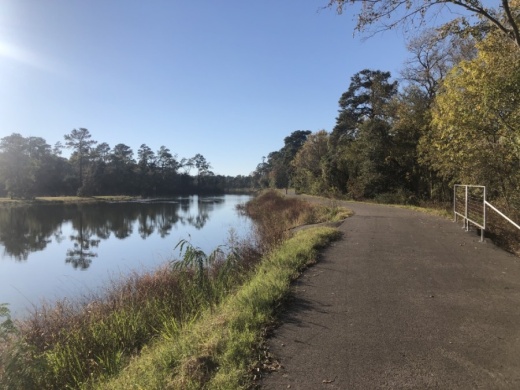The group—the Cypress Creek Watershed Partnership—was launched in 2019 as a part of a collaborative effort between the Houston-Galveston Area Council and the Texas Commission on Environmental Quality. Since its inception, the group has been open to all residents on a voluntary basis, and a steering committee consists of residents, members of the business community and local government as well as conservation experts, among others.
The partnership's scope involves 530 miles of waterways in the Cypress Creek system that drain into more than 319 square miles of land in Harris and Waller counties. Improving the water quality would have benefits in terms of the environment, recreational opportunities and the local economy, said Justin Bower, a senior planner with the H-GAC who is overseeing the partnership's work.
The group met in June to discuss some of the major problems that had been identified—including animal waste and sewer systems—as well as possible solutions.
The draft plan, available on the group's website, builds on those findings by listing the top water quality challenges and pollutant sources in the watershed and tying them directly to solutions. The plan also outlines outreach opportunities, implementation strategies and ways to evaluate success.
Water quality is measured according to TCEQ methods, which makes determinations based on what the waterway is used for—such as recreation, aquatic life or drinking water, among others. Issues identified by the state in Cypress Creek include "elevated levels of fecal indicator bacteria and a variety of concerns related to potential indicators or precursors of low dissolved oxygen," according to the report. Elevated fecal matter—as measured by E. coli levels—can be a danger to human health, while the dissolved oxygen can be harmful to aquatic life and recreational fisheries, according to the report.
The report also emphasizes the importance of taking other factors into account that are not reflected in state standards, including aesthetic qualities related to community values.
With the western part of the watershed largely agricultural, the middle part in a transitional state as development continues and the eastern part highly developed, different solutions will be required for different areas, according to the report.
"As development continues over the coming decades, additional sources of contamination may exacerbate these issues if no mitigating action is taken," the report authors wrote.
Solutions cover a wide range of action, including addressing failing sewage facilities, developing land management plans in agricultural areas, and targeting pet waste through methods such as installing more pet waste stations and adding dog parks in public places.
"Waste from both pet and feral dogs is a substantial source of bacteria and nutrients in the Cypress Creek watershed, especially in the more densely developed areas," authors wrote. "The implementation of these tasks is designed to focus on making pet waste reduction easy and visible to dog owners, especially in public places."
Conservation also plays a large role in the plan, which advocates for seeking voluntary conservation opportunities, increasing tree canopies, restoring riparian buffers—buffers of vegetation that can filter bacteria and trash from the creek—and increasing the enforcement at chronic dump sites.
Partnership officials said they are continuing to work with stakeholders to refine the plan through Jan. 31 and are aiming to get the plan approved by the U.S. Environmental Protection Agency before the end of this year. Once approved, the plan will be in effect for a 15-year period.





